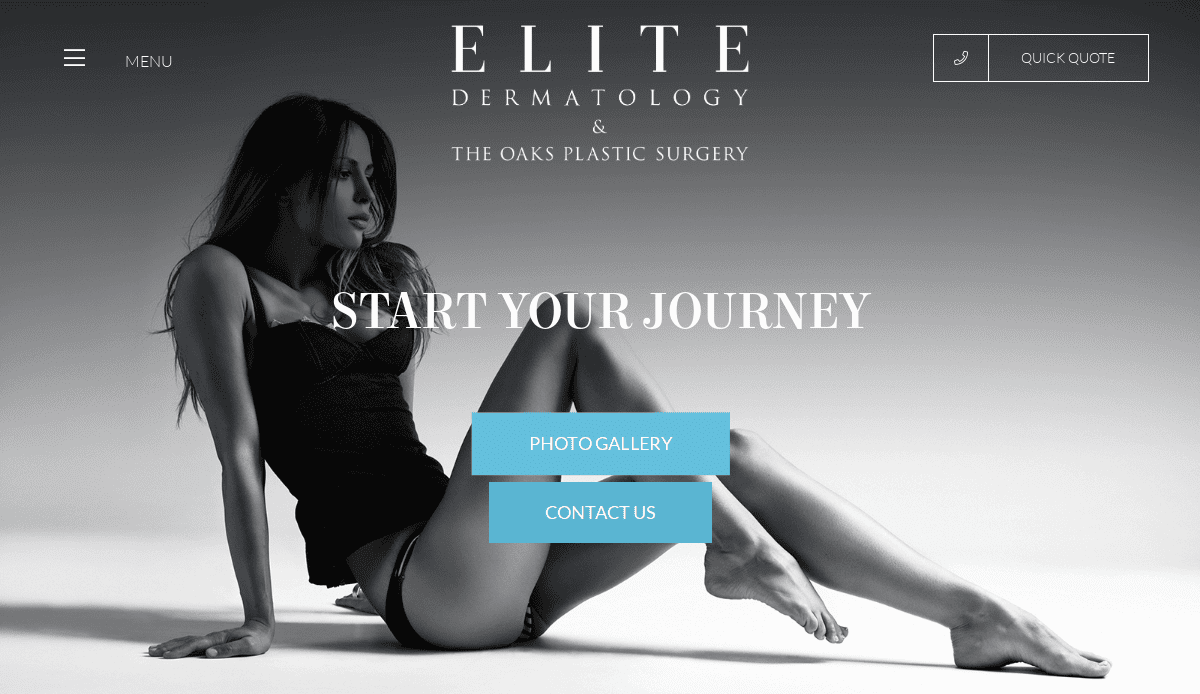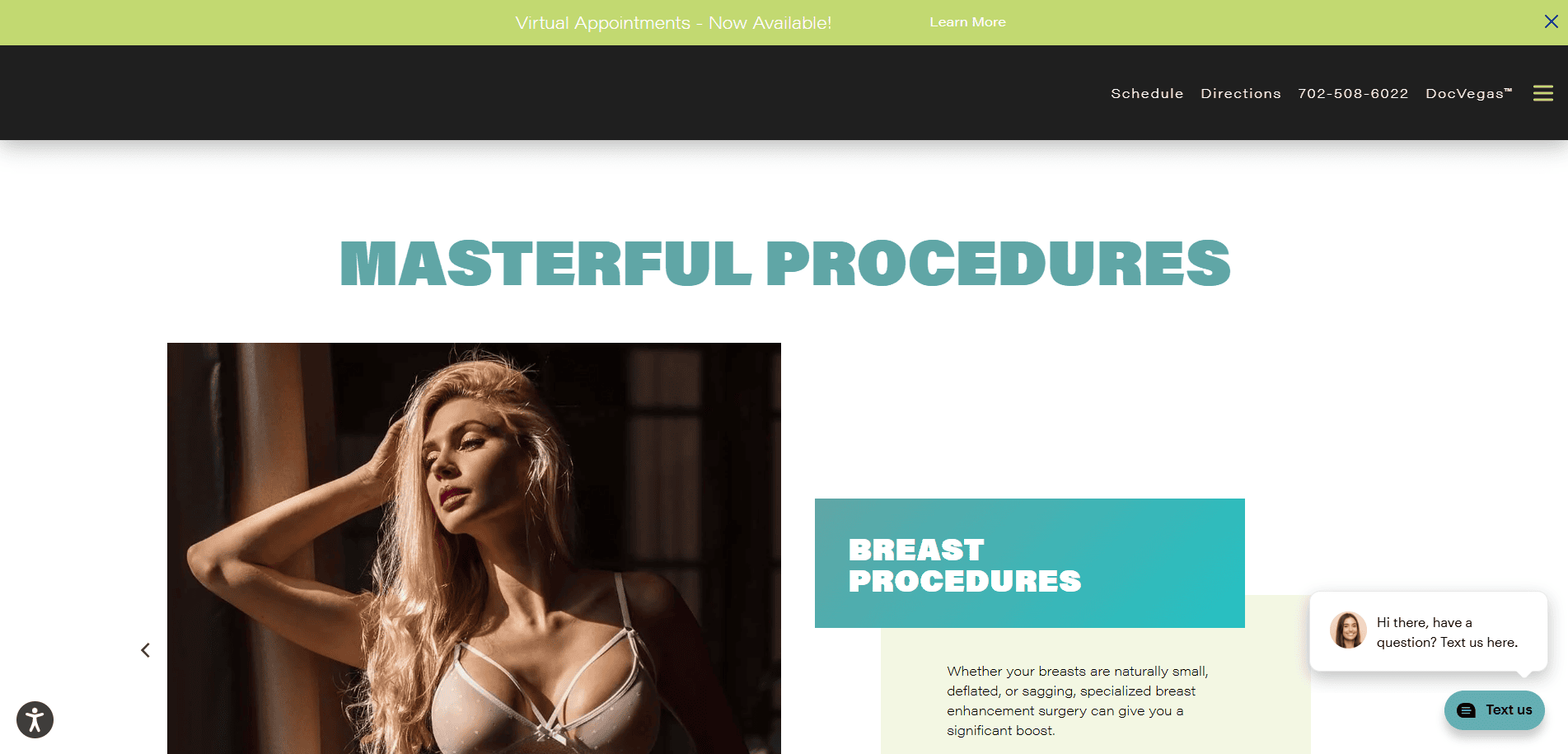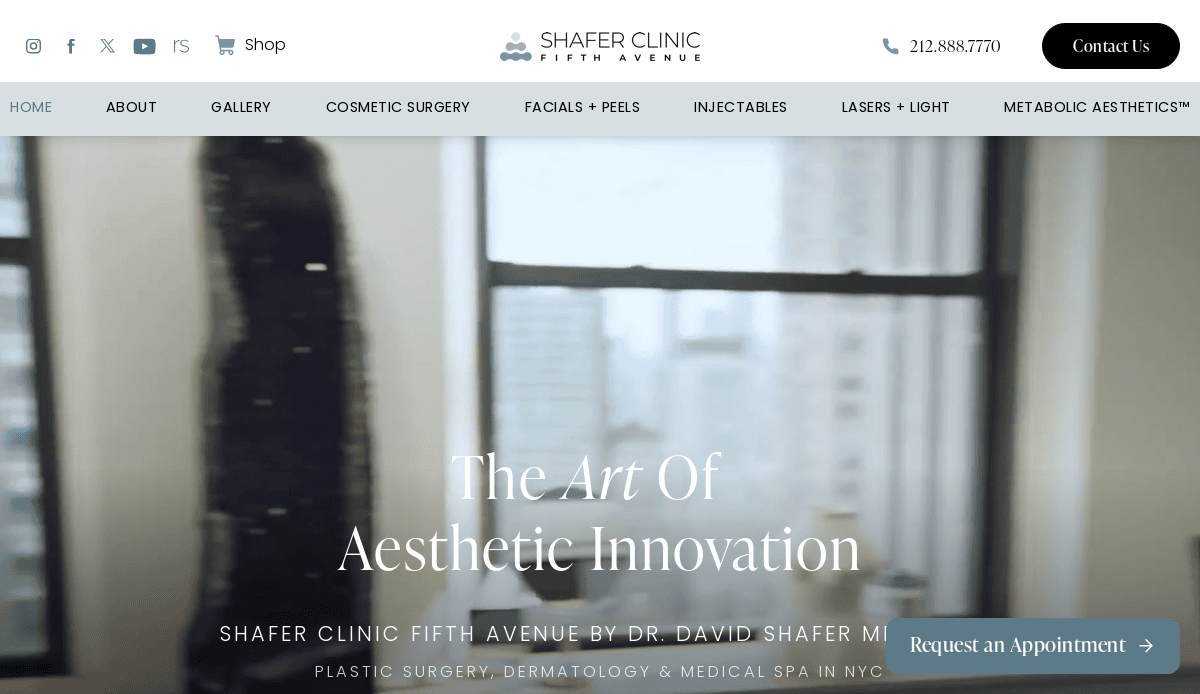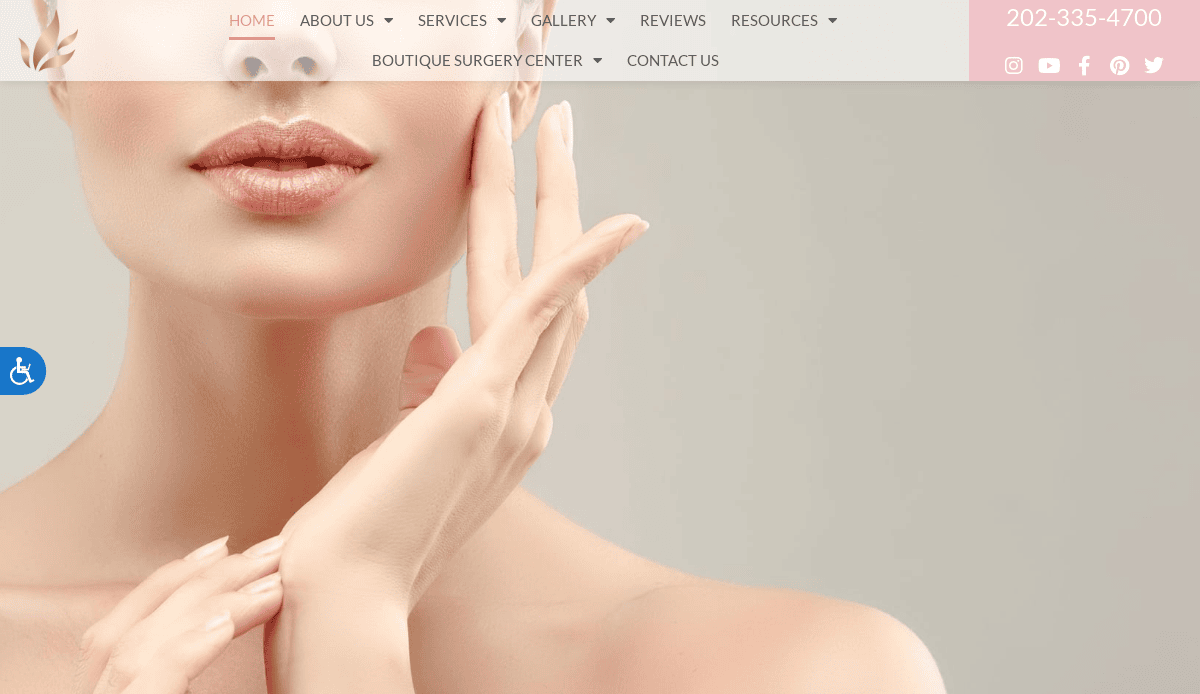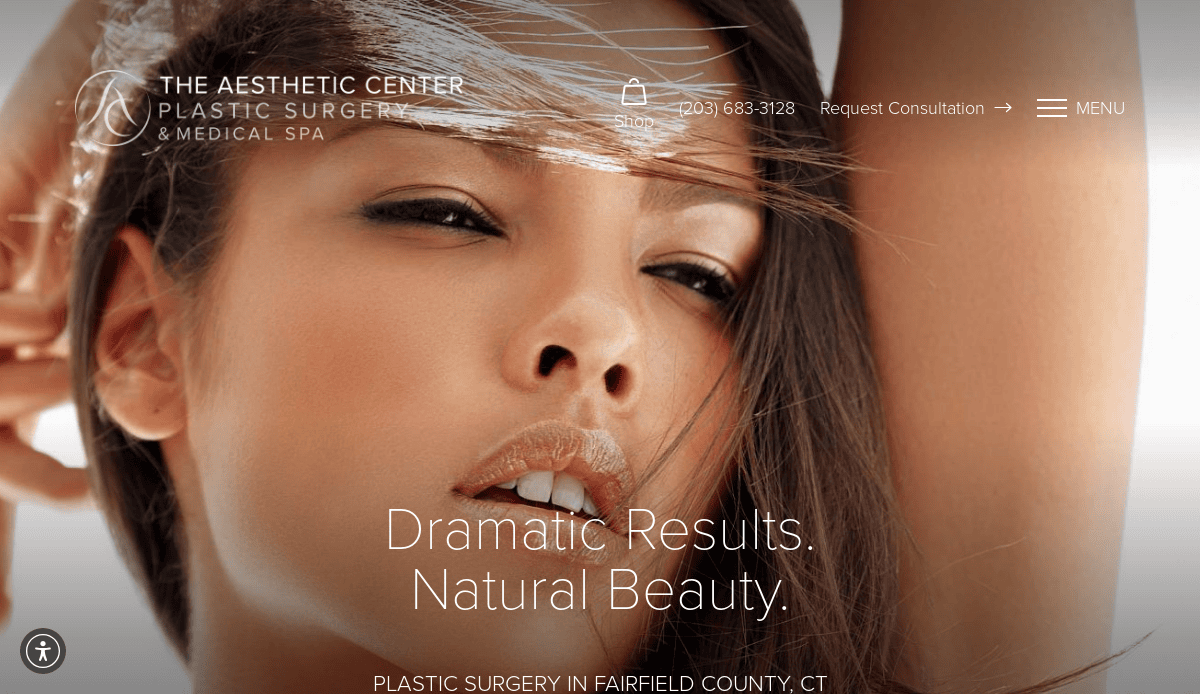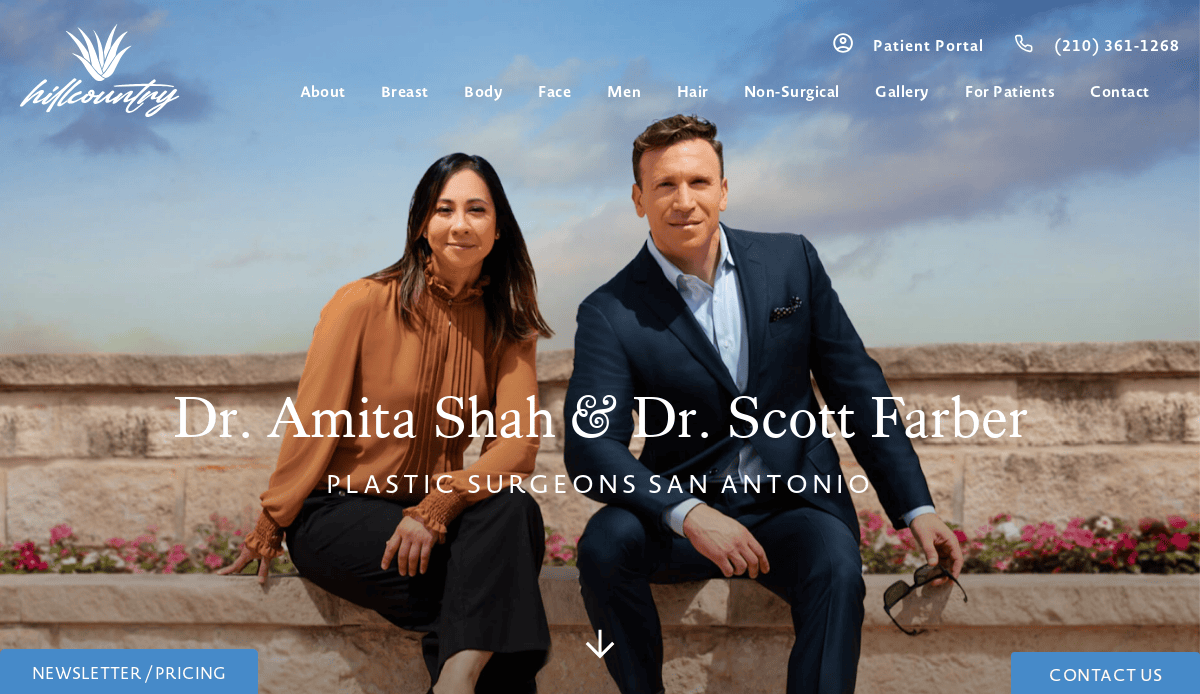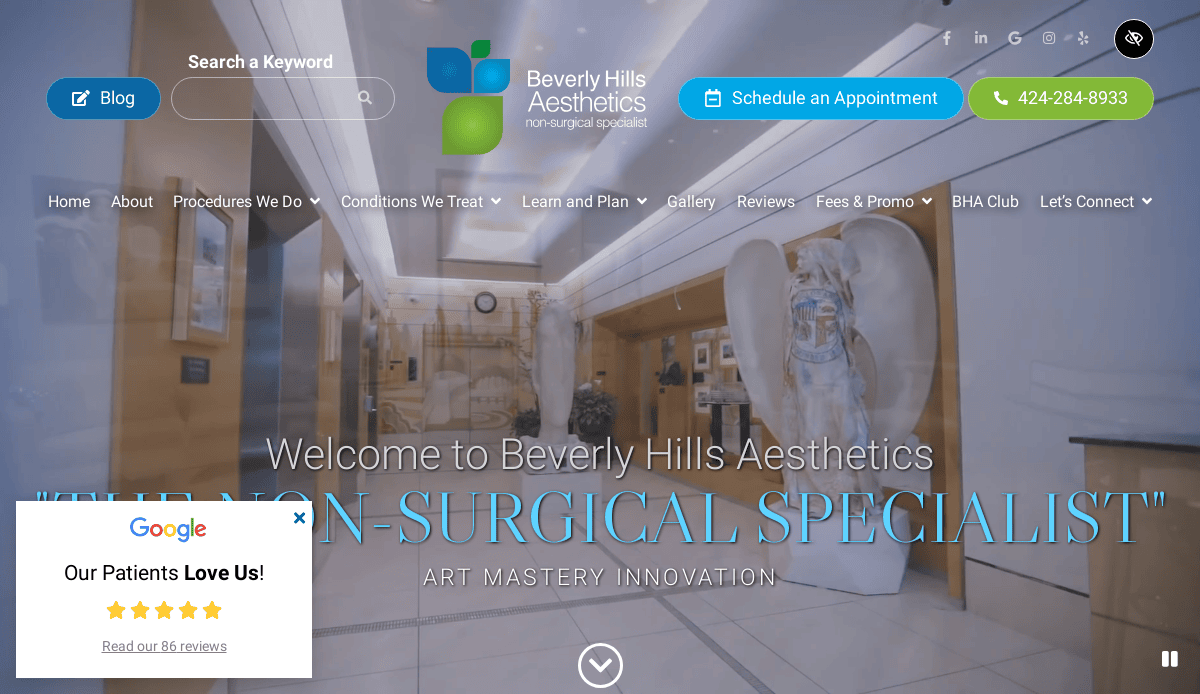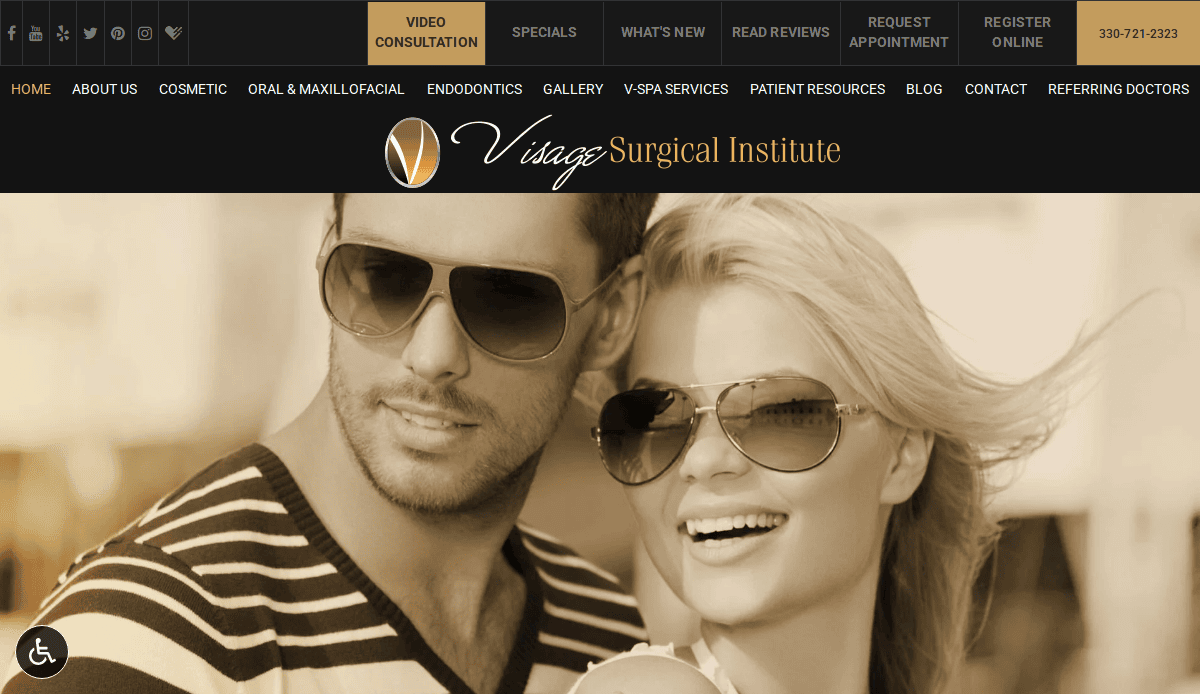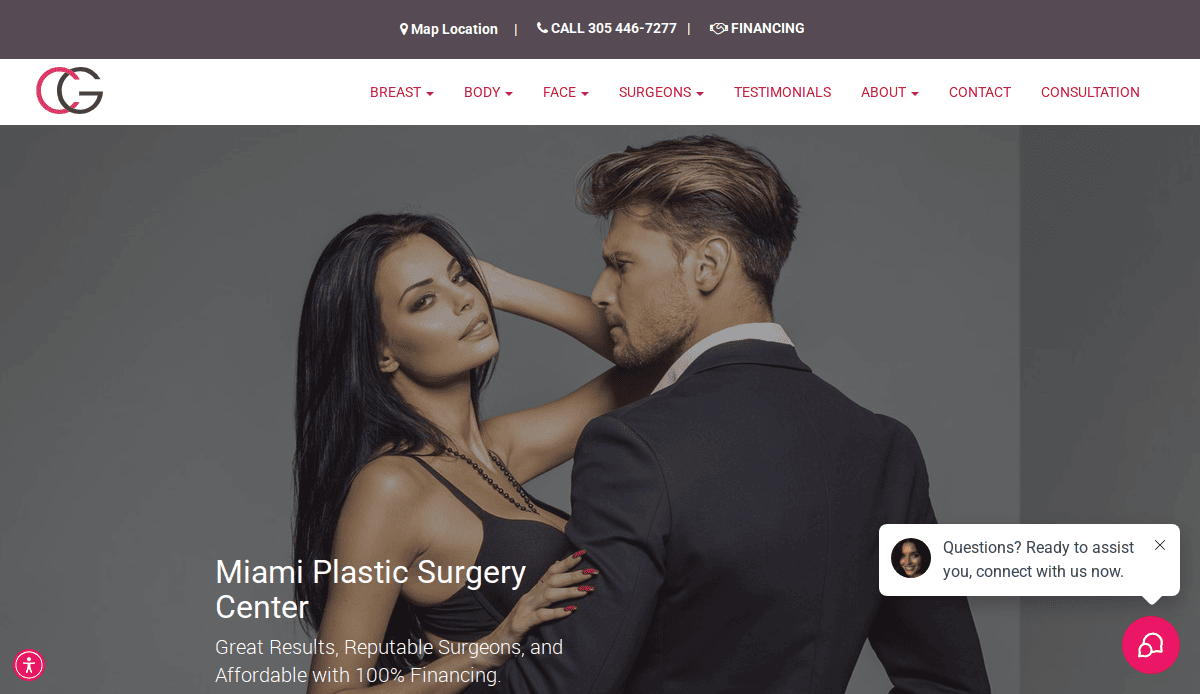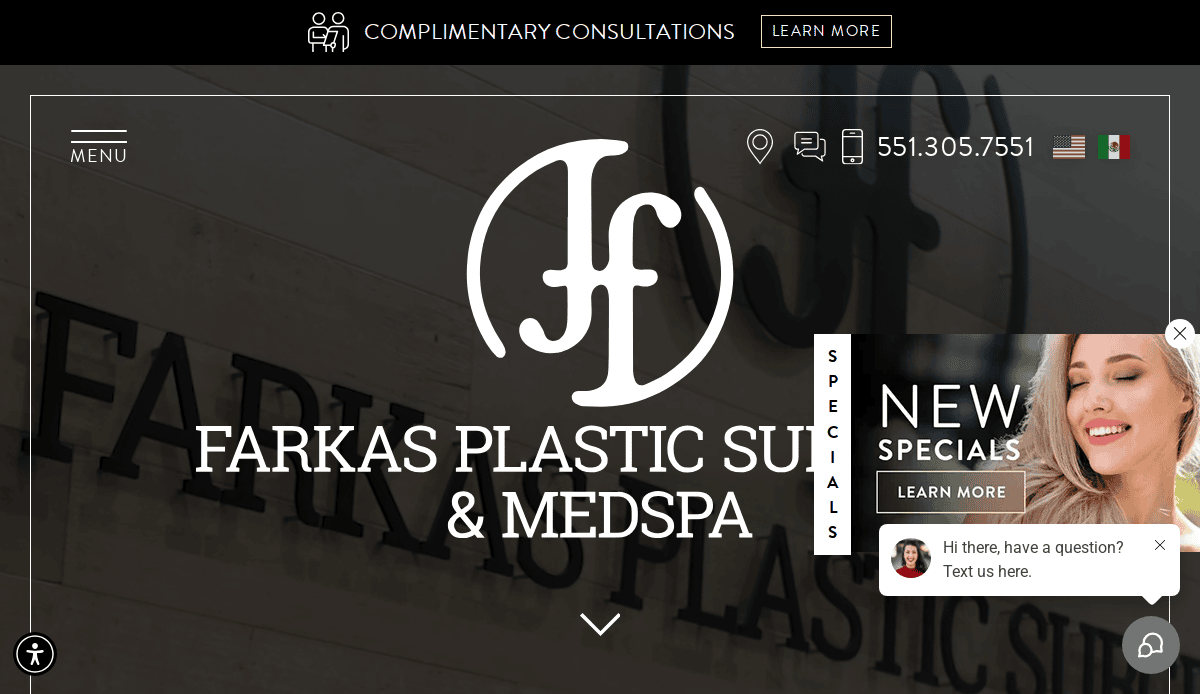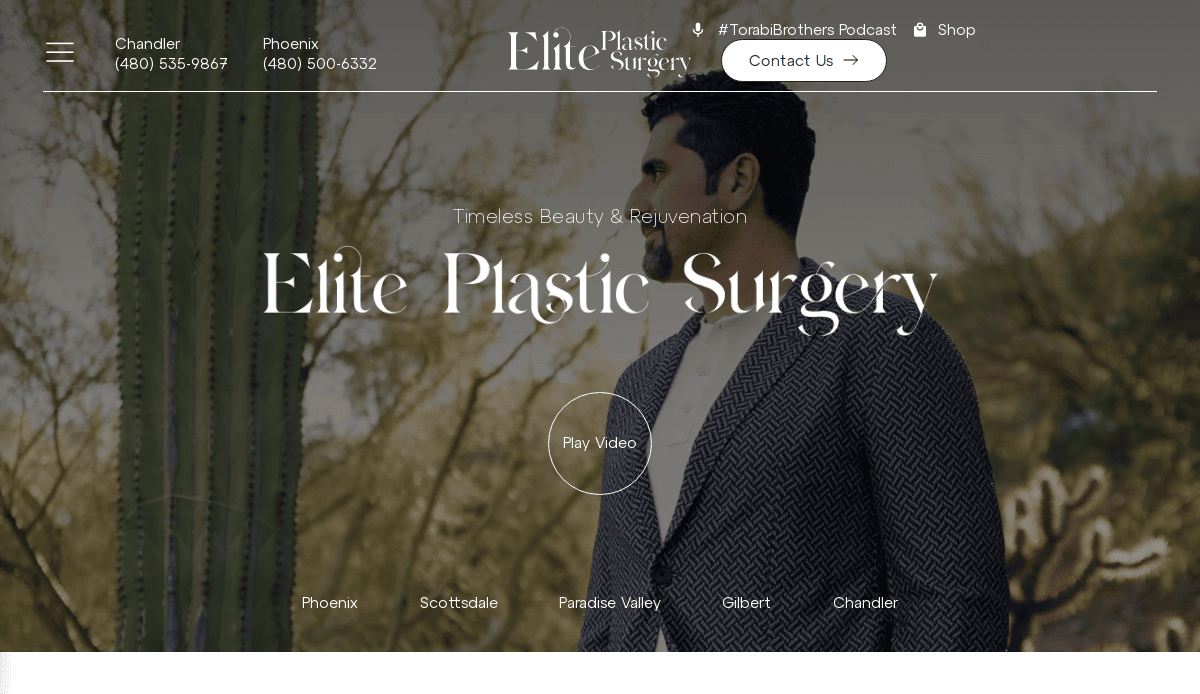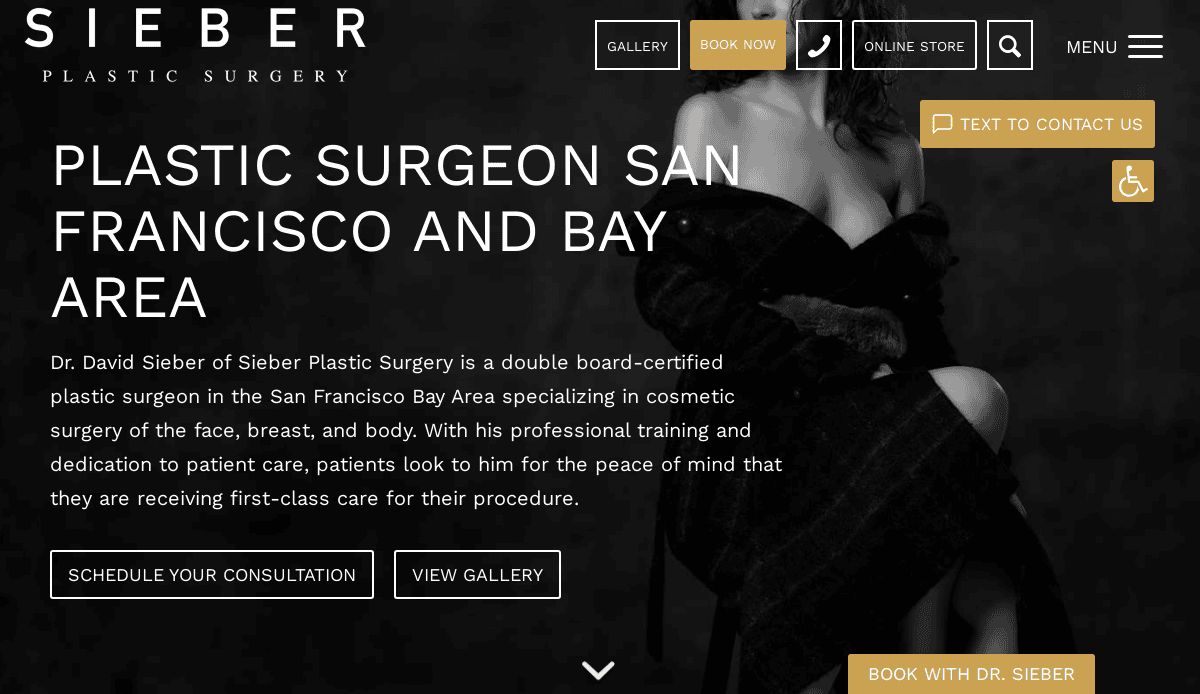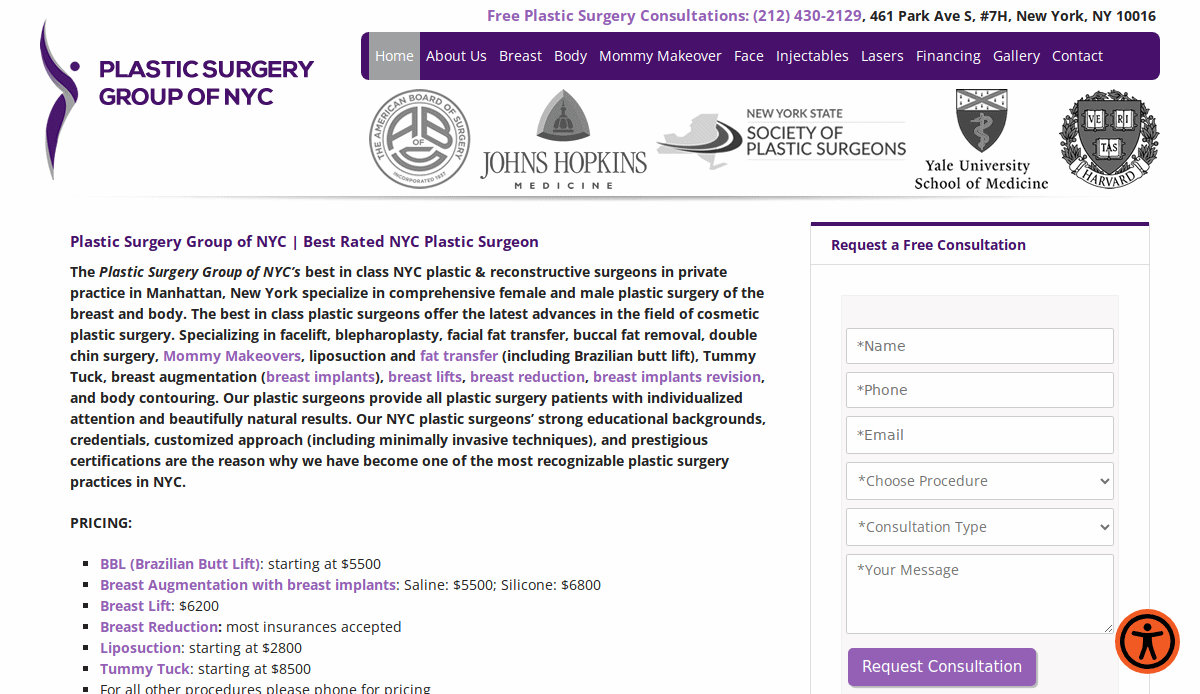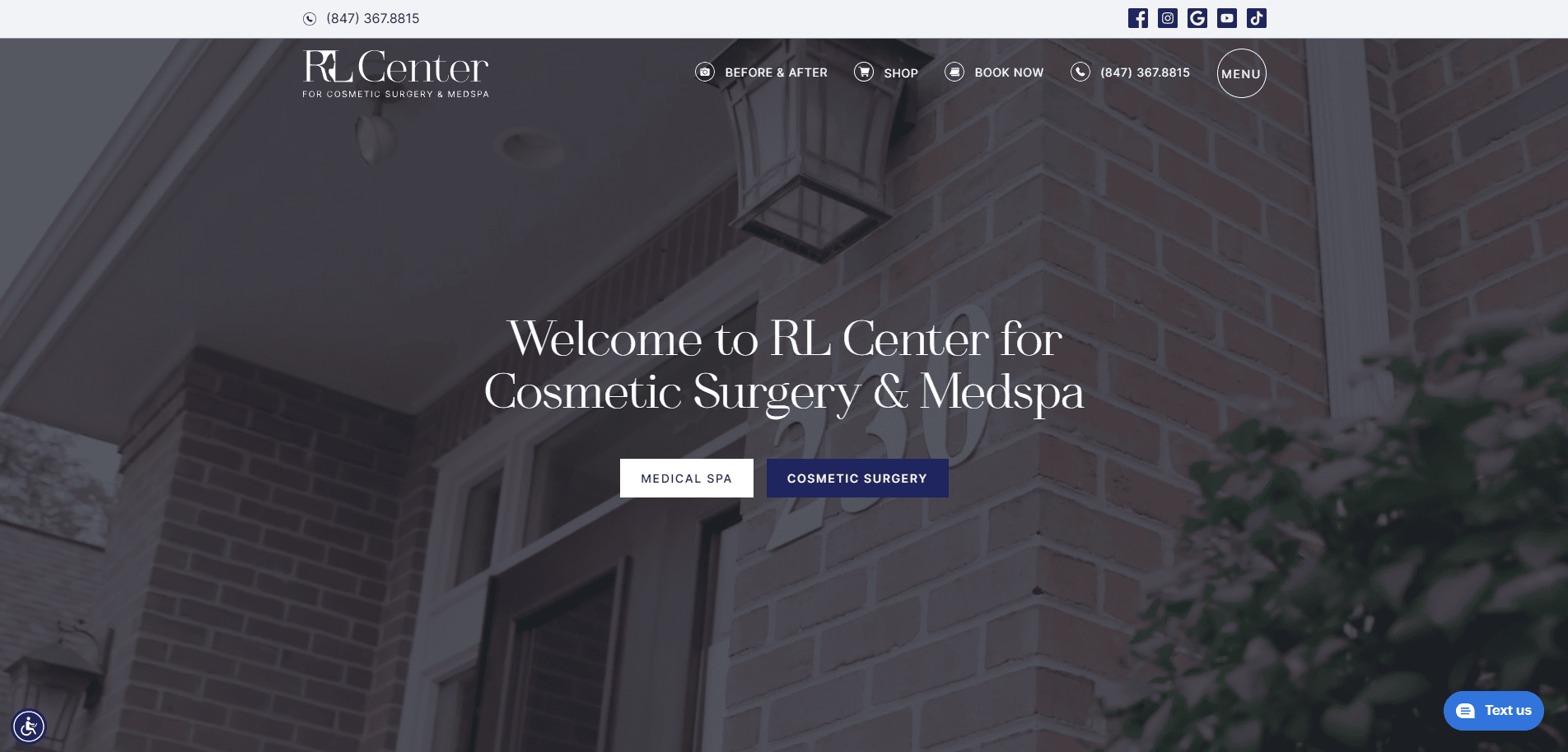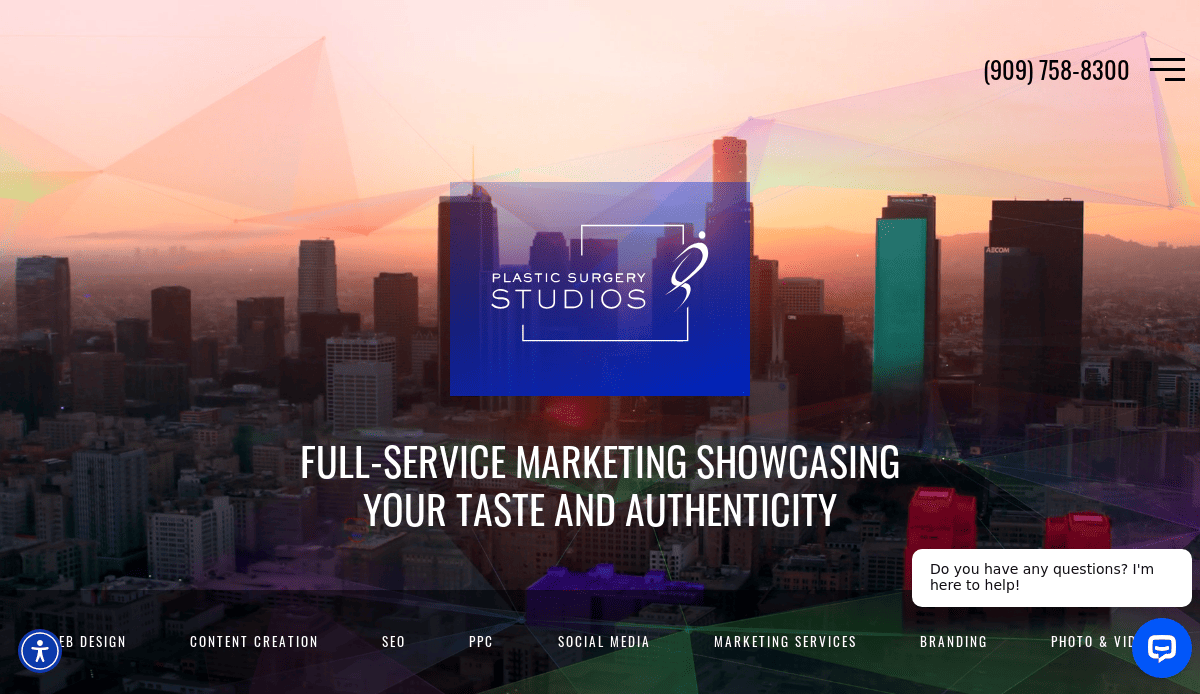Just looking for our Best Plastic Surgeon Website examples list?
Key Takeaways
As AI-generated summaries like Google’s AI Overviews become more prevalent, understanding how to optimize your content for these features is essential. Here are the key strategies to enhance your content’s visibility and effectiveness in AI Overviews:
Structure Content for Easy Summarization: Organize your content with clear headings (H2/H3), concise bullet points, and short paragraphs to make it easily digestible for AI systems.
Implement Structured Data and Schema Markup: Use structured data formats like FAQ, How-To, and Q&A schemas to help AI understand and categorize your content effectively.
Focus on E-E-A-T Principles: Ensure your content demonstrates Experience, Expertise, Authoritativeness, and Trustworthiness to increase the likelihood of being featured in AI Overviews.
Answer Specific Questions Clearly: Provide direct and concise answers to common user queries within your content to align with the informational intent of AI Overviews.
Maintain Content Freshness: Regularly update your content to reflect the latest information and trends, signaling topical relevance to AI systems.
By implementing these strategies, you can enhance your content’s visibility in AI-generated summaries, ensuring it reaches and resonates with your target audience effectively.
Why Your Plastic Surgery Website Design Is Your Most Powerful Marketing Tool
Today, a website is the cornerstone of your plastic surgery practice’s success. For prospective patients, it’s often the first impression they have of your brand, and it plays a pivotal role in their decision-making process.
A well-crafted website design does more than showcase your services; it builds trust, conveys professionalism, and guides visitors toward becoming patients. Key elements such as intuitive navigation, responsive design, and compelling calls to action are essential in creating a seamless user experience. Moreover, integrating search engine optimization (SEO) strategies ensures your practice is visible to those actively seeking cosmetic surgery solutions.
Consider this: a prospective patient searching for a “plastic surgeon” in their area is more likely to engage with a website that is visually appealing and ranks high in search engine results. By investing in a strategic web design that emphasizes user experience and SEO, you’re positioning your practice to attract and convert more visitors.
In this guide, we’ll delve into the critical components of effective website design, from branding and content marketing to digital marketing strategies that drive results. Whether you’re looking to revamp your existing practice website or build a new one from scratch, understanding these principles will help you create a digital presence that resonates with patients and supports your business goals.
Website Planning & Purpose: Building a Strategic Foundation for Your Plastic Surgery Practice
The landscape of aesthetic medicine is a competitive one; a well-planned website is not just a digital presence—it’s a strategic asset that drives patient acquisition and practice growth. For a plastic surgery practice, the website serves as the central hub for marketing services, patient education, and brand representation.
Understanding Your Practice’s Unique Needs
Every practice has its distinct goals, target demographics, and service offerings. The planning phase begins with a comprehensive analysis of these elements to ensure the website aligns with your practice’s objectives. This includes identifying the procedures you specialize in, understanding your patient journey, and determining the key messages that resonate with your audience.
Defining Clear Objectives
Establishing clear goals for your website is crucial. Whether it’s increasing consultation bookings, showcasing before-and-after galleries, or providing detailed information about procedures, each objective should guide the site’s structure and content. This strategic approach ensures that every element of the website serves a purpose in your overall marketing strategy.
Integrating Marketing Services
A successful website seamlessly integrates various marketing services to enhance visibility and patient engagement. This includes implementing search engine optimization (SEO) strategies to improve search rankings, utilizing content marketing to educate and inform potential patients, and incorporating social proof through patient testimonials and reviews. By aligning these services with your website’s design and functionality, you create a cohesive and effective online presence.
Prioritizing User Experience
The user experience (UX) is a critical component of website planning. An intuitive navigation structure, responsive design, and fast-loading pages ensure that visitors can easily find the information they need, regardless of the device they’re using. By prioritizing UX, you enhance patient satisfaction and increase the likelihood of conversion.
Ensuring Compliance and Security
In the healthcare industry, compliance with regulations such as HIPAA is non-negotiable. During the planning phase, it’s essential to incorporate secure forms for patient inquiries, ensure data encryption, and establish protocols for handling sensitive information. This protects your patients and builds trust in your practice.
By meticulously planning each aspect of your plastic surgery website, you lay the groundwork for a digital platform that reflects the quality and professionalism of your practice, plus serves as a powerful tool for attracting and retaining patients.
Design Principles: Crafting an Effective Website
Designing a website requires a strategic approach that balances aesthetic appeal with functionality. An effective website showcases your services, builds trust, and encourages potential patients to take action. Here are key design principles to consider:
1. Visual Appeal and Professional Aesthetics
Your website should reflect the quality and professionalism of your practice. Utilize a clean, modern design with a cohesive color scheme that aligns with your brand identity. High-resolution images, including before-and-after galleries, can effectively demonstrate your expertise and results.
2. Intuitive Navigation
Ensure that visitors can easily find the information they need. Implement a straightforward navigation structure with clear menus and logical page hierarchies. Key sections should include services offered, surgeon profiles, patient testimonials, and contact information.
3. Mobile Responsiveness
With a significant number of users accessing websites via mobile devices, your site must be fully responsive. This means it should adapt seamlessly to various screen sizes, providing an optimal viewing experience on smartphones and tablets.
4. Clear Calls to Action (CTAs)
Guide visitors toward desired actions with prominent and persuasive CTAs. Whether it’s scheduling a consultation or contacting your office, CTAs should be strategically placed throughout the site to encourage engagement.
5. Trust-Building Elements
Incorporate elements that establish credibility and trust. This includes displaying certifications, affiliations with professional organizations, patient reviews, and detailed surgeon bios. Transparency about your qualifications and patient experiences can significantly influence decision-making.
6. Fast Load Times
Optimize your website’s performance to ensure quick load times. Compress images, leverage browser caching, and minimize the use of heavy scripts to enhance user experience and reduce bounce rates.
7. SEO Optimization
Implement search engine optimization best practices to increase your website’s visibility. Use relevant keywords, meta descriptions, and alt tags, and ensure your site’s structure is crawlable by search engines.
8. Compliance and Accessibility
Ensure your website complies with legal standards such as HIPAA and is accessible to users with disabilities. This includes providing alternative text for images, ensuring keyboard navigability, and adhering to ADA guidelines.
For more insights into effective medical and healthcare website design, you can explore 25 examples of medical professional websites..
By adhering to these design principles, your website can effectively attract and convert potential patients, reflecting the professionalism and quality of your practice.
Content & Navigation: Structuring Your Plastic Surgery Website for Maximum Impact
Effective content organization and intuitive navigation are critical components of a successful website. They ensure that prospective patients can easily find the information they seek, fostering trust and encouraging engagement.
Crafting a Clear and Intuitive Navigation
A well-structured navigation menu serves as the roadmap for your website visitors. It should be straightforward, allowing users to access key information with minimal effort. Essential navigation elements include:
- Home: A welcoming page that highlights your practice’s unique value proposition.
- About: Detailed information about your credentials, experience, and philosophy.
- Procedures: Categorized listings of surgical and non-surgical services offered.
- Before & After Gallery: Visual testimonials showcasing your work.
- Testimonials: Patient reviews that build credibility.
- Blog: Educational content addressing common patient questions and concerns.
- Contact: Easy-to-find contact information and appointment scheduling options.
Implementing dropdown menus can help organize subcategories, ensuring a clean and user-friendly interface.
Developing Engaging and Informative Content
Content should be tailored to address the needs and concerns of prospective patients. Key considerations include:
- Procedure Descriptions: Clear, concise explanations of each service, including benefits, risks, and recovery expectations.
- FAQs: Answers to common questions to alleviate patient anxieties.
- Educational Blog Posts: Articles that position your practice as a thought leader in the field.
- Calls to Action (CTAs): Strategically placed prompts encouraging users to schedule consultations or contact the practice.
Content should be written in a tone that is both professional and approachable, reflecting the compassionate care your practice provides.
Enhancing User Experience Through Design
The visual layout of your content significantly impacts user engagement. Best practices include:
- Responsive Design: Ensuring the website is accessible and functional across all devices.
- Consistent Branding: Utilizing a cohesive color scheme and typography that aligns with your practice’s identity.
- High-Quality Imagery: Incorporating professional photos and videos to illustrate your services and results.
- Accessibility Features: Implementing tools such as alt text for images and keyboard navigation to accommodate all users.
By focusing on these elements, your website will attract new patients and provide them with a seamless and informative experience, ultimately leading to increased trust and conversions.
Visual Elements: Enhancing User Experience and Brand Identity in Plastic Surgery Website Design
In the realm of plastic surgery, visual elements are paramount in conveying professionalism, building trust, and guiding prospective patients through their decision-making journey. A thoughtfully designed website leverages visual components to create an engaging UX that reflects the practice’s brand identity and values.
Establishing a Cohesive Visual Brand Language
A consistent visual brand language ensures that every element on the website aligns with the practice’s identity. This includes the use of specific color palettes, typography, imagery, and design motifs that resonate with the target audience. For instance, a palette of soft blues and whites can evoke feelings of calmness and trust, while elegant serif fonts may convey sophistication and expertise. Consistency across these elements reinforces brand recognition and professionalism.
High-Quality Imagery and Before-and-After Galleries
Visual content, particularly before-and-after galleries, plays a crucial role in demonstrating the surgeon’s expertise and the results patients can expect. High-resolution images with standardized lighting and angles provide authenticity and allow prospective patients to assess outcomes realistically. Incorporating interactive features, such as sliders to compare before and after images, can enhance engagement and provide a more immersive experience.
Intuitive Layout and Visual Hierarchy
An intuitive layout guided by a clear visual hierarchy helps users navigate the website effortlessly. Strategic use of headings, subheadings, and visual cues like icons or contrasting colors directs attention to key information and action steps. For example, prominently displaying a “Schedule a Consultation” button in a contrasting color can effectively guide users toward taking the next step.
Responsive Design for Seamless Accessibility
With the increasing use of mobile devices, ensuring that the website’s visual elements are responsive is essential. Images, text, and interactive components should adapt seamlessly to various screen sizes without compromising quality or functionality. A responsive design improves UX and contributes to better search engine rankings.
Incorporating Multimedia Elements
Integrating multimedia elements such as videos can provide dynamic content that educates and engages visitors. For instance, a brief introductory video featuring the surgeon discussing their approach and philosophy can humanize the practice and build rapport with prospective patients. Additionally, virtual tours of the facility can offer transparency and comfort to those considering in-person visits.
By meticulously crafting visual elements that align with the practice’s brand and cater to the needs of patients, a plastic surgery website can effectively communicate its value proposition, foster trust, and encourage user engagement.
Ongoing WordPress Maintenance: Ensuring Optimal Performance for Your Plastic Surgery Website
Maintaining a WordPress website for a plastic surgery practice is crucial to ensure security, performance, and a seamless visitor experience. Regular maintenance tasks help prevent potential issues and keep your site running smoothly.
Regular Backups
Implement a reliable backup solution to safeguard your website’s data. Schedule automatic backups to occur daily or weekly, depending on the frequency of content updates. Store backups in a secure, off-site location to protect against data loss due to server failures or security breaches.
Core, Theme, and Plugin Updates
Keep your WordPress core, themes, and plugins up to date to benefit from the latest features, security patches, and performance improvements. Regularly check for updates and apply them in a timely manner to minimize vulnerabilities and compatibility issues.
Security Monitoring
Implement security measures to protect your website from threats. Utilize security plugins that offer features like malware scanning, firewall protection, and login attempt monitoring. Regularly review security logs to detect and address any suspicious activities promptly.
Performance Optimization
Enhance your website’s performance by optimizing images, leveraging caching mechanisms, and minimizing the use of heavy scripts. Regularly test your site’s loading speed and make necessary adjustments to ensure a fast and responsive user experience.
SEO and Content Updates
Maintain your website’s search engine visibility by regularly updating content, optimizing metadata, and ensuring all links are functional. Conduct periodic SEO audits to identify and address issues that may affect your site’s ranking.
User Experience Enhancements
Regularly assess your website’s usability by testing forms, navigation menus, and interactive elements. Ensure that your site is accessible across various devices and browsers, providing a consistent experience for all users.
By adhering to a comprehensive maintenance plan, your plastic surgery website will remain secure, efficient, and effective in attracting and retaining patients.
20 Example Web Designs for Plastic Surgeons
1. Shifrin Plastic Surgery
Location: Chicago, IL
Key Takeaways:
- Elegant and refined design with a harmonious color scheme.
- User-friendly navigation facilitates easy access to information.
- Prominent display of awards and honors enhances credibility.
2. Care Plastic Surgery
Location: Cary, NC
Key Takeaways:
- Warm and professional aesthetic with cohesive color usage.
- Clear calls-to-action encourage user engagement.
- Comprehensive information about procedures and patient resources.
3. The Oaks Plastic Surgery
Location: Houston, TX
Key Takeaways:
- Clean and professional design with high-resolution imagery.
- Intuitive navigation simplifies the user journey.
- Informative blog and detailed procedure descriptions.
4. Rapaport Plastic Surgery
Location: New York, NY
Key Takeaways:
- Striking color scheme creates a memorable visual experience.
- Intuitive navigation guides users effectively.
- Prominent display of media features and accolades.
5. VIP Plastic Surgery
Location: Las Vegas, NV
Key Takeaways:
- A simple navigation system enhances user-friendliness.
- High-quality media showcasing procedure results.
- Testimonials build trust and credibility.
6. Shafer Clinic Fifth Avenue
Location: New York, NY
Key Takeaways:
- Minimalist design with smooth animations.
- Scrolling calls-to-action maintains user engagement.
- Comprehensive information on services and testimonials.
7. DC Plastic Surgery Boutique
Location: Washington, D.C.
Key Takeaways:
- Feminine color palette creates a welcoming atmosphere.
- Service sections focusing on different procedures.
- Accessibility features enhance user experience.
8. The Aesthetic Center
Location: Derrien, CT
Key Takeaways:
- Modern layout with contemporary typography.
- High-quality imagery enhances visual appeal.
- Easy navigation with well-placed calls-to-action.
9. Hill Country Plastic Surgery
Location: San Antonio, TX
Key Takeaways:
- Modern, clean design with a focus on user-friendly navigation
- Comprehensive information on procedures, enhancing patient education
- Prominent display of patient testimonials, building trust and credibility
10. Miami Plastic Surgery
Location: Miami, FL
Key Takeaways:
- Vibrant and engaging design reflecting the city’s energy.
- Bold colors and high-resolution images.
- Clear calls-to-action facilitate consultations.
11. Beverly Hills Aesthetics
Location: Beverly Hills, CA
Key Takeaways:
- Luxury-focused design catering to upscale clientele.
- Minimalistic layout with high-quality imagery.
- Seamless booking system enhances user convenience.
12. Visage Surgical Institute
Location: Medina, OH
Key Takeaways:
- Sharp color scheme with high-quality visuals.
- Interactive features like chatbots and 3D simulations.
- Comprehensive information on procedures and consultations.
13. CG Cosmetic Surgery
Location: Miami, FL
Key Takeaways:
- Modern design with high-quality images.
- Detailed information on procedures and patient testimonials.
- Virtual consultation option enhances accessibility.
14. Farkas Plastic Surgery & Medspa
Location: Englewood Cliffs, NJ,
Key Takeaways:
- Clean design with responsive layout.
- Expertly placed calls-to-action encourage user interaction.
- Engaging custom video header on the homepage.
15. Elite Plastic Surgery
Location: Phoenix, AZ
Key Takeaways:
- Luxurious vibe with a dark color scheme.
- Contact information widget and accessibility menu.
- Online consultation feature enhances user convenience.
16. Sieber Plastic Surgery
Location: San Francisco, CA
Key Takeaways:
- Simple design with effective use of spacing.
- High-quality images and easily accessible information.
- Virtual consultation booking feature.
17. Rowe Aesthetics
Location: New York, NY
Key Takeaways:
- Focus on featured images, capturing user attention.
- Subtle and minimalistic design enhances user experience.
- Clear information on services and procedures.
18. Plastic Surgery Group of NYC
Location: New York, NY
Key Takeaways:
- Consistent branding with an orange and blue color scheme.
- Use of results photographs enhances credibility.
- Comprehensive information on services and the team.
19. Ritacca Cosmetic Surgery & Medspa
Location: Vernon Hills, IL
Key Takeaways:
- Clean, minimal layout with soft color palette for a calming aesthetic
- Easy-to-navigate menu highlighting a wide range of surgery and medspa services
- Clear CTAs with strong trust signals from certifications and media mentions
20. Plastic Surgery Studios
Location: Rancho Cucamonga, CA
Key Takeaways:
- Custom WordPress development with speed optimization and mobile-first design
- Interactive before-and-after galleries and compelling testimonials for trust
- Strategically placed CTAs paired with clean copy and on-brand design elements
Ready to Elevate Your Plastic Surgery Website?
Today, having a professional website that reflects the quality and professionalism of your practice isn’t optional—it’s essential. From design elements to responsive web design and strategic SEO, every aspect of your site should work together to engage visitors and convert them into patients.
Whether you’re launching a new practice website or looking to enhance an existing one, it’s crucial that your website captures the essence of your practice and delivers a seamless experience to cosmetic surgery patients. A well-designed website builds credibility and ensures that prospective patients feel comfortable contacting your practice and confident in your services.
Work with a design team that understands the intricacies of plastic surgeon website design. Contact us today to create a website that reflects your expertise and elevates your brand.
FAQs: Building an Effective Plastic Surgery Website
Why is a well-designed website crucial for a plastic surgery clinic?
A well-designed website serves as the digital front door to your practice, often forming the first impression for possible patients. It should effectively communicate your services, showcase your expertise, and provide easy navigation to build trust and encourage engagement.
What essential features should a plastic surgery website include?
Key features include responsive design for mobile compatibility, clear calls-to-action, detailed information about procedures, before-and-after galleries, patient testimonials, and easy contact options. These elements enhance user experience and facilitate patient conversion.
How does SEO impact my website’s performance?
Search Engine Optimization (SEO) improves your website’s visibility on search engines, making it easier for patients to find your services. Implementing SEO best practices, such as keyword optimization and quality content creation, can lead to increased traffic and higher conversion rates.
How often should I update my website content?
Regular updates are vital to keep your website relevant and informative. Updating content with new procedures, blog posts, and patient testimonials provides value to visitors and positively influences rankings.
Can I integrate patient education materials into my website?
Yes, incorporating educational content about procedures and recovery processes can position your practice as a knowledgeable authority, helping patients make informed decisions and enhancing trust in your services.
How can I ensure my website reflects the essence of my practice?
Align your website’s design elements—such as color schemes, imagery, and tone—with your practice’s brand identity. Consistent branding across your website reinforces your practice’s values and professionalism.
What is the importance of integrating social proof into my website?
Displaying patient reviews and testimonials provides social proof, demonstrating the quality of your services and building credibility with prospective patients.
How can I make my website more interactive for visitors?
Incorporate features like virtual consultations, live chat support, and interactive before-and-after sliders to engage visitors actively and provide a dynamic user experience.
Should I consider professional website design services for my practice?
Engaging professional website design services can ensure your website is tailored to meet industry standards, optimized for SEO, and aligned with your practice’s goals, ultimately enhancing your online presence and patient acquisition efforts.



